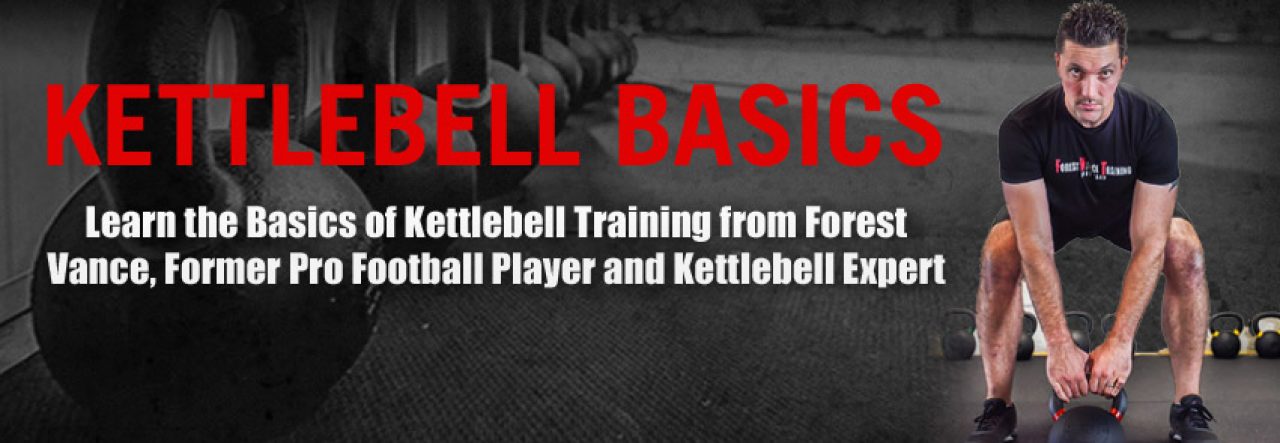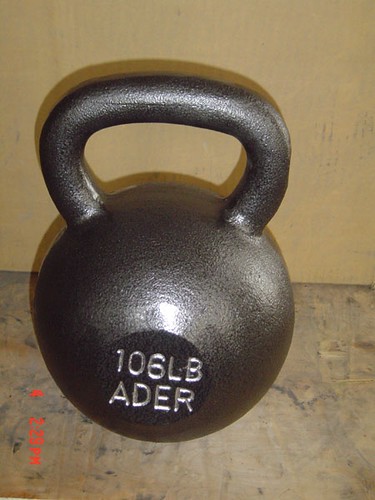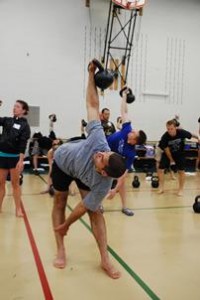You’ve mastered the basic kettlebell exercises (swing, TGU, squat, clean, press, and snatch). You’ve met some of your initial kettlebell training goals and are ready to take your KB training to the next level.
Challenge yourself in a new way and add some variety to your workouts with double kettlebell exercises!
A few unique qualities and benefits of double kettlebell exercises:
- More work/total weight lifted in same time frame = more calories burned and faster fat loss
- Ability to utilize more total weight during a given exercise = faster muscle gains
- More core involvement = stronger abs
So for today’s post, I’ve come up with a list of my top five double kettlebell exercises. This list is by no means exhaustive (I actually came up with a list of seventeen of ’em off the top of my head before writing this) – but these are the moves you should master and incorporate first into your workouts before learning any other more advanced/exotic ones.
Today I’ll go over my top five double kettlebell exercises with you, and next post I’ll put together a couple of double KB workouts for you to try using these exercises. In the meantime, read the exercise descriptions, watch the short video, and start practicing!
Video Transcript
If you’ve mastered all the basics – the squat, the Turkish get-up, the swing, the clean, the press, and the snatch with one kettlebell – you might want some variety and extra challenge to your existing kettlebell workout program. You can do some double kettlebell drills.
So today I’m going to go over the top five with you and give you some basic coaching points on each!
Our first exercise with two kettlebells will be the double kettlebell swing. This is going to be identical in mechanics to your normal kettlebell swing. Just a couple variations – wide stance with the feet, you’re going to turn the kettlebells in slightly at the bottom. So you get a nice smooth transition and your palms are going to be facing the ground at the top. That’s your number one double kettlebell exercise.
Number two is the double kettlebell squat. We’re going to get into a wide stance, clean the ‘bells back, bring them up to the rack position so your thumbs are touching your collarbones, forearms straight up and down. Bring your stance in a little bit and we’re going to do the double kettlebell squat.
From here, our third one is the double kettlebell press. So you’re going to be in the same strong rack position, and we’re going to do our press with two kettlebells at the same time.
Number four is the double kettlebell clean. Same coaching points as our single kettlebell swing. Little bit wider stance, so we have room for the bells to clear.
Our fifth one is the renegade row. This is one of my favorites. It starts with a wide grip push-up, you get in the push-up position, do a push-up and then shift your weight to one side. You’re going to do a row with one ‘bell. The key with this one is to do your push-up and then be able to shift your weight. So you want to be able to pick up your hand and do your row. A common mistake with that one, if you don’t shift your weight over enough to one side, you don’t tighten up the abs enough, you don’t engage the glutes and tighten up the quads, and get tight enough for maximum benefit.
To sum up, you can add some variety into your existing kettlebell program and challenge yourself in a brand new way with double kettlebell exercises. Stay tuned for next time … I’ll share a couple of double kettlebell workouts you can do using the exercises I talked about in today’s article.
Thanks, and keep training hard –
Forest Vance, Level II Certified Russian Kettlebell Instructor
PS – Like this article? Find 58 more kettlebell/body weight workouts, 95 done-for-you meal ideas, 11 full-length training videos and much more here: === >> Kettlebell Basics Weekly Workouts


